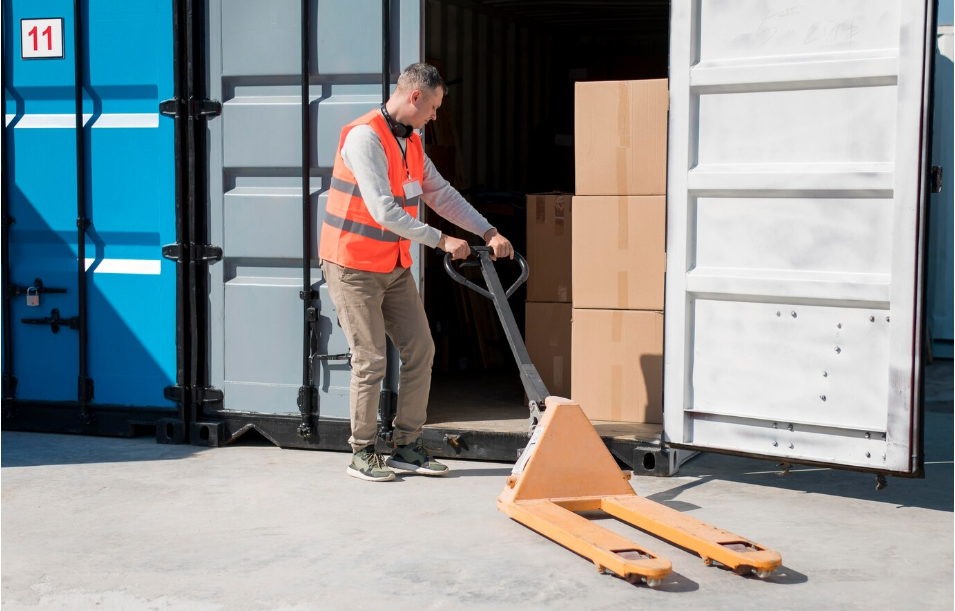How Cross Docking Transforms Warehousing and Distribution

Strong 8k brings an ultra-HD IPTV experience to your living room and your pocket.
There is no hesitation in saying that warehousing and distribution have always been the crucial aspect of supply chain management. Traditionally, warehouses have played the role of storage hubs where goods are kept until someone orders them.
But nowadays no one has time to wait longer and we demand for fast and affordable shipping. For these reasons, businesses have found out ways to make their supply chains leaner and more efficient.
One of the best ways is – cross dock services. This is a logistics strategy that is undoubtedly revolutionizing how goods move from suppliers to customers.
Knowing About Cross Docking
The process where incoming goods are unloaded from trucks, are sorted, and then immediately loaded onto outbound trucks bound for their final destinations is known as cross docking.
A thing to note here is that these are the goods that are not being stored for long in the warehouse. For instance, a relay race, where the baon is handed off quickly from one runner (truck) to the next, with minimal pause in between.
The Traditional Warehouse vs. Cross Docking
Talking about traditional warehouses, products have to wait on shelves for days and sometimes weeks, waiting for orders to come. This is not a very convenient approach as it requires ample space, labour to move and track inventory, and a lot of money to cover storage costs.
On the other hand, cross dock services are a fast process. Instead of storing goods, warehouses become fast-paced transfer points, where the goal is to keep products moving as quickly as possible.
Cross Docking Working Explained
Here is how a typical cross docking operation takes place –
- The trucks loaded with products from suppliers arrive at the cross dock facility
- These goods are then quickly unloaded and sorted based on where they have to delivered
- After this, outbound trucks are loaded with sorted goods, ready to head out to stores, customers, or distribution centers
This process can take just a few hours, compared to days or weeks in a traditional warehouse.
The Benefits of Cross Docking
Cross docking offers several advantages for businesses and their customers. Some of them are:
Faster Delivery
Since goods don’t sit in storage, they reach their destinations much more quickly. This is a big win for businesses dealing with perishable items, seasonal goods, or time-sensitive products like fashion or electronics
Lower Storage Costs
With less need for long-term storage, businesses save on warehouse rent, utilities, and maintenance. This can translate into significant cost reductions.
Reduced Labour Costs
This service needs only a few people to move, store, and track inventory. This further reduces payroll expenses.
Better Inventory Control
Because products spend less time in the warehouse, there’s less risk of items getting lost, damaged, or becoming obsolete.
Optimized Transportation
Cross docking allows companies to consolidate shipments, fill trucks more efficiently, and reduce the number of trips needed. This not only saves money but also helps reduce the environmental impact of transportation.
Minimal Shipping Damage
With fewer touchpoints and less handling, there’s a lower risk of products being damaged in transit.
Real-World Examples
Cross docking is especially useful for:
- Grocery stores that need to keep shelves stocked with fresh produce
- Retailers handling fast-moving consumer goods
- E-commerce companies promising next-day or even same-day delivery
- Businesses distributing products from multiple suppliers to many locations
Challenges and Considerations
While cross dock services bring many benefits, it’s not without its challenges:
Precise Timing Required – The entire system is dependent on perfect timing. In case inbound shipments are not on time, the whole process will stall. This will lead to delays and bottlenecks.
Complex Coordination – Managing the flow of goods from multiple suppliers to various destinations can be quite a juggling act! It requires careful planning and real-time communication to keep everything running smoothly. If mistakes happen, you could end up with lost inventory or incorrect shipments, which is definitely not ideal.
Not for Every Product – Now, let’s talk about what products are best suited for cross docking. This method works wonders for items that don’t need special handling or quality checks and where demand is pretty predictable. However, if you’re dealing with fragile or highly customized items, this approach might not be the best fit.
Skilled Workforce Needed – Another thing to consider is that you’ll need a skilled workforce. Your staff must be trained to sort and handle products quickly and accurately, which can mean investing in training and technology. It’s all about making sure your team is ready to keep things moving efficiently!
Is Cross Docking Right for Your Business?
So, is cross docking the right fit for your business? Well, it’s definitely not a one-size-fits-all solution. This method shines for businesses that move large volumes of goods quickly, have reliable suppliers, and cater to customers who really value speed.
If you’re dealing with perishable items, high-demand retail products, or serving multiple destinations, cross docking could be a game-changer for you, helping you cut costs and boost customer satisfaction.
On the flip side, if your business relies on storing inventory for long periods or if your products need extensive quality checks or customization, sticking with a traditional warehousing model might be the better route. It’s all about finding what works best for your specific needs!
Final Thoughts
Cross dock services are shaking up warehousing and distribution by making supply chains faster, leaner, and more cost-effective. By cutting out unnecessary storage and keeping goods moving, businesses can react quicker to market demands, save money, and provide better service to their customers.
As everything speeds up in the world of commerce, cross docking is becoming a go-to strategy for any company wanting to stay ahead in the logistics race.
Note: IndiBlogHub features both user-submitted and editorial content. We do not verify third-party contributions. Read our Disclaimer and Privacy Policyfor details.


